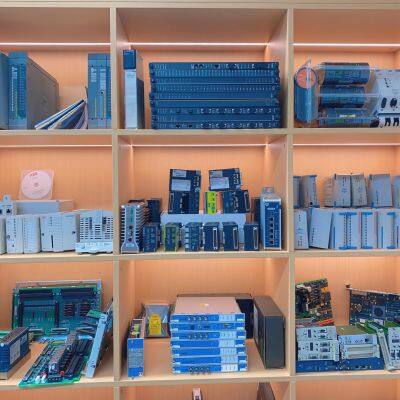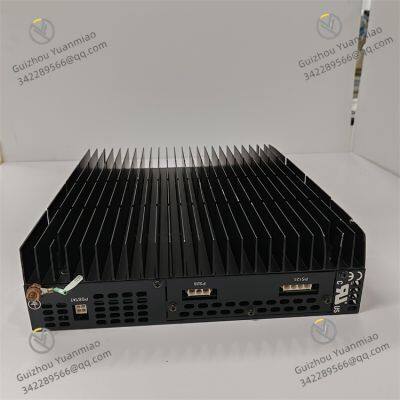Product Description
GE IS2020RKPSG3A is a device that plays a crucial role in the field of industrial automation. Especially in the GE Mark VI system, it serves as a VME rack power supply and shoulders the important responsibility of providing stable power supply for the entire system.
I. Core Functions
(1) Efficient and Stable Power Supply
Powerful power output: IS2020RKPSG3A has a rated output power of 400W, which can provide sufficient and stable power for various control and interface modules in the VME rack, ensuring that the entire system can maintain an efficient and stable working state even under high-load operation. Whether it is the core module that processes complex control instructions or the communication module that transmits data in real-time, they can operate normally under its stable power supply, ensuring the continuity of industrial production processes.
Adaptable input voltage: Its rated input voltage is 125 Vdc, which can seamlessly interface with the existing power infrastructure in many industrial sites. This precise adaptation to a specific voltage, on the one hand, ensures that the device can obtain a stable power input from the power source, and on the other hand, reduces the risk of power conversion losses and equipment failures that may be caused by voltage mismatch, improving the reliability and stability of the entire power supply system.
(2) Rich and Practical Output Interfaces
Diverse output types: This module has a status ID output, which can be used to feedback its own working status information in real-time, facilitating operation and maintenance personnel to quickly know whether the device is operating normally. At the same time, it is also equipped with one remote +28V PSA output and another five +28V PSA outputs. These output interfaces can provide +28V power support for different external devices or modules, meeting diversified power supply needs. For example, in some industrial automation scenarios that require distributed power supply, these multiple +28V PSA outputs can be respectively connected to sensors, actuators and other devices in different positions, realizing comprehensive power coverage for the entire production process.
Convenient connection design: These output interfaces are located on the top and bottom of the device, with a reasonable layout, facilitating connection with other devices during actual installation and wiring. When engineers build the system, they can more conveniently plan the cable routing, reduce the difficulty and complexity of wiring, and improve the efficiency of system integration.
(3) Convenient Operation and Status Monitoring
Simple user control: The front panel of the IS2020RKPSG3A module is equipped with a toggle switch, which is the only user control on the module. Through this toggle switch, users can easily reset module faults. During the operation of the device, if some temporary faults occur, operation and maintenance personnel do not need complex operation procedures. They can quickly restore the normal operation of the device by simply toggling the switch, which greatly improves the efficiency of fault handling and reduces the production interruption time caused by device faults.
Intuitive status indication: The panel is also equipped with three LED indicators, which are green, red and yellow. When the green LED is on, it indicates that the device is in normal operation; when the red LED is on, it warns that the device has a relatively serious fault and needs to be checked and repaired immediately; the yellow LED is usually used to indicate some intermediate states or secondary fault information, such as some parameters of the device being close to the critical value. This design of intuitively displaying the device status through LED lights of different colors enables operation and maintenance personnel to quickly understand the operation status of the device even at a long distance and take corresponding measures in time.

II. Hardware Characteristics
(1) Reasonable Installation Design
Precise installation position: This module is specially designed to be installed on the right side of the VME control and interface rack. This precise installation position design makes the layout of the entire rack more reasonable and compact when building the VME system. Modules with different functions can be installed in an orderly manner according to established rules, which is convenient for cable connection and maintenance management, and also helps to improve the space utilization of the entire rack.
Convenient installation method: Its installation method is simple, and the connection structure with the VME rack is stable and reliable. In the actual industrial production environment, there may be adverse factors such as vibration and impact, and this stable installation method can ensure that the module can still maintain a good connection state in complex environments, and will not loosen or have poor contact due to external factors, thus affecting the normal operation of the device.
(2) Effective Heat Dissipation Mechanism
Unique heat dissipation structure: The side of the body is designed with multiple metal fins, which form an efficient heat dissipation component. During the operation of the device, the power module will generate a certain amount of heat. The metal fins can increase the heat dissipation area, quickly dissipate the heat generated inside the module to the surrounding environment, and effectively reduce the working temperature of the device.
Stable heat dissipation guarantee: Good heat dissipation performance is crucial for the stable operation of the power module. Through this effective heat dissipation mechanism, IS2020RKPSG3A can keep the temperature of internal electronic components within a reasonable range during long-term continuous operation, avoiding performance degradation or even damage of components due to overheating, thereby extending the service life of the device and improving the reliability and stability of the system.

III. Application Fields
(1) Power and Energy Industry
Power station equipment control: In various power stations such as thermal power stations and hydropower stations, the GE Mark VI system is widely used in the automatic control and monitoring of power generation equipment. As the VME rack power supply in the Mark VI system, IS2020RKPSG3A provides stable power support for the entire control and monitoring system. For example, in a thermal power station, it provides power for sensors that monitor parameters such as boiler water level, steam pressure, and combustion status, as well as actuators that control water supply, fuel supply, and air volume, ensuring that power generation equipment can automatically adjust its operating state according to changes in grid load, realize an efficient and stable power generation process, and achieve the goal of energy conservation and emission reduction.
Substation equipment monitoring: In substations, it is necessary to conduct real-time safety monitoring on the operating status of many electrical equipment such as transformers, circuit breakers, and disconnectors. The Mark VI system where IS2020RKPSG3A is located can collect parameters such as temperature, current, and voltage of these equipment in real-time, and IS2020RKPSG3A provides stable power for equipment in links such as data collection, transmission, and processing, ensuring the normal operation of the monitoring system. When abnormal conditions occur in the equipment, such as excessive temperature and current overload, the system can send alarm signals in time and take corresponding control measures, such as automatic tripping and starting cooling fans, to ensure the safe and stable operation of the substation and provide a solid guarantee for the reliable supply of electricity.
(2) Petroleum and Chemical Industry
Oil drilling platform control: On offshore oil drilling platforms, the environment is complex and harsh, and the reliability requirements for equipment are extremely high. The Mark VI system where IS2020RKPSG3A is located is used to monitor and control the operating status of various drilling equipment. It provides power for sensors that monitor parameters such as pressure and temperature of drilling equipment, and actuators that control drilling speed and direction, ensuring the safe progress of drilling operations. When abnormal conditions occur, such as a sudden increase in pressure and abnormal temperature, the system can quickly trigger the emergency shutdown system to prevent accidents. At the same time, it also provides power support for the natural gas leak detection system on the platform. Once a leak is detected, it immediately starts ventilation equipment and alarm devices to ensure the safety of personnel on the platform and the normal operation of equipment.
Chemical production process control: In chemical production equipment, the precise control of key equipment such as reactors and distillation towers is crucial for the safety of the production process and product quality. IS2020RKPSG3A provides stable power for the Mark VI system that controls these equipment, ensuring that the system can adjust parameters such as temperature, pressure, and flow of the equipment in real-time according to the requirements of the production process. For example, in the production process of synthetic rubber, the system ensures that the synthesis reaction is carried out under safe and stable conditions by precisely controlling the temperature and pressure of the reactor, improving product quality and production efficiency. In case of emergencies, such as reaction out of control and equipment failure, the system can quickly start safety protection measures to prevent the expansion of accidents, all of which are inseparable from the stable power supply of IS2020RKPSG3A.
(3) Industrial Manufacturing Industry
Automated production line control: In automated production lines such as automobile manufacturing and electronic equipment manufacturing, it is necessary to precisely coordinate and control many equipment such as robots, conveyor lines, and processing equipment. The Mark VI system where IS2020RKPSG3A is located is responsible for the automatic control of the entire production line, and IS2020RKPSG3A provides power for various control modules, communication modules, and equipment execution agencies in the system. For example, in the body welding production line of an automobile manufacturing plant, it supplies power to equipment that controls the actions of welding robots, welding parameters, and the running speed of conveyor lines, ensuring the consistency of body welding quality and the improvement of production efficiency. When a fault occurs in the production line, the system can quickly locate the fault point and take corresponding repair measures to reduce the downtime of the production line. Among them, stable power supply is one of the key factors to ensure the rapid response and efficient operation of the system.
Equipment safety protection system: In the industrial manufacturing process, the safety protection of equipment is crucial. IS2020RKPSG3A provides power for the Mark VI system where the equipment safety protection system is located. This system monitors the operating status of the equipment in real-time, such as dangerous situations such as equipment overload, overheating, and abnormal vibration. Once an abnormality is detected, the system immediately triggers the safety protection device to stop the equipment operation, preventing equipment damage and personnel casualties. For example, in the SMT (Surface Mount Technology) production line of an electronic equipment manufacturing factory, the system conducts safety monitoring on equipment such as chip mounters and reflow ovens. IS2020RKPSG3A provides stable power for the monitoring system and protection devices. When abnormal conditions of the equipment are found, such as component mounting errors caused by blockage of the chip mounter's nozzle and abnormal temperature rise of the reflow oven, the system sends alarm signals in time and stops the equipment operation, avoiding the production of a large number of defective products and equipment damage, and ensuring the safety and stability of the production process.


GE VMIVME5576 Each Reflective Memory Board
GE VMIVME7698 Single-Board Computer
Vibro-meter 200-510-041-021 200-510-111-021 VM600 MPC4 Machine Protection Card
GE WES13-3 Control Mainboard Module
GE WES5120 5120-1506 power module
Vibro-meter 200-510-070-113 200-510-111-034 VM600 MPC4 Machinery Protection Card
GE WES5302-150 Field controller master unit
GE WES5302-111 Field controller master unit
Vibro-meter 200-510-071-113 200-510-111-034 VM600 MPC4 Machinery Protection Card
Vibro-meter 200-560-000-016 200-560-101-015 VM600 IOC4T Input/Output Card
GE WESCOM D200 VME System Framework
Vibro-meter 200-560-000-018 200-560-101-015 VM600 IOC4T Input/Output Card
GE D20 EME Ethernet/Memory Board D20EME
Vibro-meter 200-560-000-113 200-560-101-017 VM600 IOC4T Input/Output Card
Vibro-meter 200-566-000-012 200-566-101-012 VM600 IOCN Interface Module
GE WES5123-2600 Field controller master unit
Vibro-meter 200-570-000-014 200-570-101-013 VM600 Monitoring Module
Vibro-meter VM600?200-560-000-114?200-560-101-018?IOC4T Key Input/Output Control Module
GE WES5123-1200 Remote Terminal Unit
Vibro-meter 200-582-500-021 VM600 RPS6U SIM-330A Power Supply
Vibro-meter SIM-275A 200-582-500-013 Power Supply
VIBRO-METER VM600 RPS6U 200-582-500-013 Rack Power Supply
Vibro-meter VM600 RPS6U 200-582-200-011 Power Supply
Vibro-meter 200-595-031-111 VM600 CPUM Input/Output Communications Network Card
 yezi
Hi there! Welcome to my shop. Let me know if you have any questions.
yezi
Hi there! Welcome to my shop. Let me know if you have any questions.





